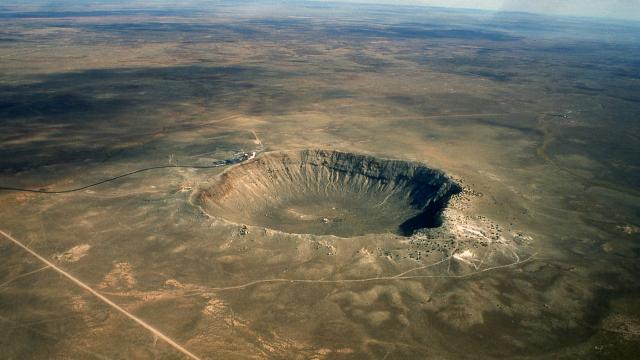But the new result is controversial.
A fresh asteroid-strike study is generating controversy among scientists, a report suggests.
A N.A.S.A-funded study presented at the Lunar and Planetary Science Conference last week suggests that big asteroids hit Earth more often than previously thought, based on satellite data. But not everyone agrees with the interpretation, according to the journal Science(opens in new tab), which says more fieldwork is needed to confirm the data.

The study(opens in new tab) was led by James Garvin, chief scientist of N.A.S.A’s Goddard Space Flight Center in Maryland, and used high-resolution data from several Earth-observing satellites to examine three impact craters. Garvin’s team suggests that large rings are visible in the data, showing that the craters are tens of miles wider than previously measured. That size adjustment, in turn, implies that the impacts were far more powerful than previously cataloged.
“It would be in the range of serious crap happening,” Garvin said during the presentation in The Woodlands, Texas, according to Science.
Calculating the impact rates of asteroids is a difficult science, as many incoming space rocks burn up in Earth’s atmosphere and wind and water erode the marks left by asteroids that do manage to make it to the ground. Figuring out how often the moon or Mars is pummeled is also difficult, as the rate may vary over time; similarly, assessing threatening asteroids has its issues, although scientists can say with certainty that no big asteroids pose a threat to Earth for the foreseeable future.

Generally speaking, researchers estimate that a space rock at least 0.62 miles (1 km) wide hits Earth about every 600,000 or 700,000 years, according to Science. The new study ramps up the rate considerably, suggesting four objects of that size smacked into Earth in the last million years.
In conversations with other researchers at the conference, however, Science learned that they were urging more critical examination of the results before fully revising all of our estimates for space rock encounters.

Image of the asteroid Dimorphos captured by N.A.S.A’s DART spacecraft, with newly named features annotated. Three of the five features are at the center of Dimorphos, while Dhol marks the big boulder on the moon’s limb. Pūniu is a tiny rock that will be used to note latitudes and longitudes, scientists said. (Image credit: N.A.S.A/Johns Hopkins APL)
Anna Łosiak, who researches craters at the Polish Academy of Sciences, said the rings identified in the new study may not be crater features after all. If they truly are, she added, the implications are worrisome, because “there are a lot of space rocks that may come and make a mess.”
Similarly, Canadian planetary scientist Gordon Osinski, a Western University professor leading the science team on the country’s forthcoming lunar rover, said he could not conclusively identify rims in the study’s data. “Those features are so subtle that I don’t think they say ‘big structural rim,'” he said.

Garvin’s team based their work on two space assets that use lidar altimetry (the ICESat-2 satellite and the Global Ecosystem Dynamics Investigation perched on the International Space Station) and commercial stereo imaging available from private companies Planet and Maxar. The scientists argue that the newer data, given their higher resolution of 13 feet (4 meters) or less, is a “major improvement over existing topography” used for impact calculations, like N.A.S.A DEM and Germany’s TanDEM-X SAR that offer 100 feet (30 m) and 40 feet (12 m) resolution, respectively.
Garvin told Science that, without fieldwork, “we haven’t proven anything,” which was echoed in yet another conversation with Bill Bottke, a planetary dynamicist at the Southwest Research Institute in Boulder, Colorado. “I’m skeptical. I want to see a lot more before I believe it,” Bottke said.
Soucre: www.space.com








